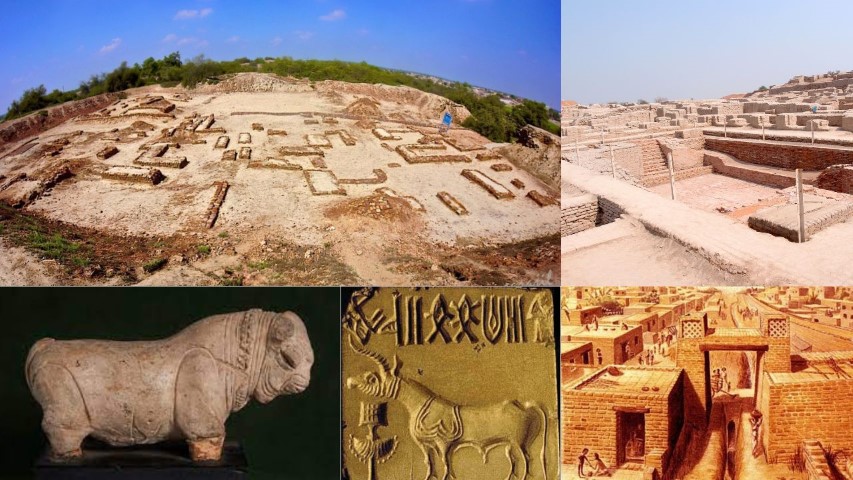The Chronicles of ‘Indian Civilisation and Culture’ is a story of evolution. From the ancient Indus Valley civilization to British rule, all have made their mark on the present society. The advent and loss of these great empires, the invasion of the foreign rulers who gradually became primeval, bringing their different cultures, etc. are all reflected in the evolution of the Indian civilization and culture. Asking and answering questions about various facets of Indian civilization’s history, traditions, religions, languages, and customs can be a fascinating journey toward understanding the subtleties and complexity of Indian civilization and culture.
In this context, the ‘Indian civilization and culture question answer format provides a platform for individuals to gain a deeper understanding of this vast and complex subject.
1. Who first excavated the Harappa site in 1921?
Ans: Dayaram Sahni was the first person to excavate the Harappa site in 1921.
2. During what time period did the Paleolithic Age occur?
Ans: The Paleolithic Age occurred during the time period of 30,00,000–10,000 BC.
3. What time period is known as the Mesolithic Age?
Ans: The people during the time period of 9,000-4,000 BC are known to have experienced the Mesolithic Age.
4. When did the Neolithic Age take place?
Ans: The Neolithic Age occurred during the time period of 7,000–1,000 BC.
5. What is the time range of the Pre-Harappan Age?
Ans: The Pre-Harappan Age is known to have occurred during the time period of 3,500–2,500 BC.
6. During what time period did the Chalcolithic Age take place?
Ans: The Chalcolithic Age occurred during the time period of 3,500–1,000 BC.
7. What is the time range for the Harappan Age?
Ans: The Harappan Age is known to have occurred during the time period of 2,500–1,750 BC.
8. When did the Iron Age take place?
Ans: A: The Iron Age occurred during the time period of 1,000–500 BC.
9. What is the time range of the Post Harappan Age?
Ans: The Post Harappan Age is known to have occurred during the time period of 2,000–1,000 BC.
10. Who was the scholar who first used the term Indus Civilisation?
Ans: John Marshall was the scholar who first used the term Indus Civilisation.
11. What is the most accepted timeline of the Indus Civilisation?
Ans: The most accepted timeline of the Indus Civilisation is 2500 BC-1750 BC, based on Carbon-14 dating.
12. To which period does the Indus Civilisation belong?
Ans: The Indus Civilisation belongs to the proto-historic period, specifically the Chalcolithic Age/Bronze Age.
13. What is the heartland of the Indus Civilisation?
Ans: The heartland of the Indus Civilisation is the Harappa-Ghaggar- Mohenjodaro axis.
14. In which countries have Indus sites been found?
Ans: Archaeologists have found Indus sites in India and Afghanistan, particularly at Shortughai and Mundigaq.
Also Read: Most Important Medieval India Questions From History
15. What were the capital cities of the Indus Civilisation?
Ans: The capital cities of the Indus Civilisation were Harappa and Mohenjodaro.
16. Which were the port cities of the Indus Civilisation?
Ans: The port cities of the Indus Civilisation were Lothal, Sutkagendor, Allahdino, Balakot, and Kuntasi.
17. What was the area covered by the Harappan Civilisation?
Ans: The Harappan Civilisation was triangular in shape and covered modern-day Rajasthan, Punjab, Haryana, Gujarat, and Pakistan. It was the largest of the three ancient urban civilizations, the other two being ancient Egypt and Mesopotamia.
18. Who is considered the father of Indian archaeology?
Ans: Historians consider Alexander Cunningham, who served as the first Director-General of the Archaeological Survey of India (ASI), to be the father of Indian archaeology.
19. Which animals were domesticated by the Indus Valley Civilization?
Ans: The Indus Valley Civilization domesticated oxen, buffaloes, goats, sheep, and pigs, as well as dogs, cats, asses, and camels. Humped bulls were favored by the Harappans.
20. Who is the male deity represented in the sitting posture of a yogi, surrounded by an elephant, tiger, rhinoceros, and buffalo, and two deer at his feet?
Ans: The male deity represented in the sitting posture of a yogi, surrounded by an elephant, tiger, rhinoceros, and buffalo, and two deer at his feet is Pashupati Mahadeva (proto-Siva).

21. Was the Harappan civilization predominantly secular or religious?
Ans: The Harappan civilization was predominantly secular.
22. What were the Phallus (Lingam) and Yoni associated with in the religious practices of the Indus region?
Ans: The religious practices of the Indus region associated the Phallus (Lingam) and Yoni with fertility.
23. Which natural elements were worshipped by the people of the Indus region?
Ans: The people of the Indus region worshipped trees (pipal), fire, and animals (unicorns, humped bulls, etc.).
24. Did the Harappans believe in ghosts and evil forces? If yes, what did they use to protect themselves from them?
Ans: Yes, the Harappans believed in ghosts and evil forces. They used amulets to protect themselves from them.


